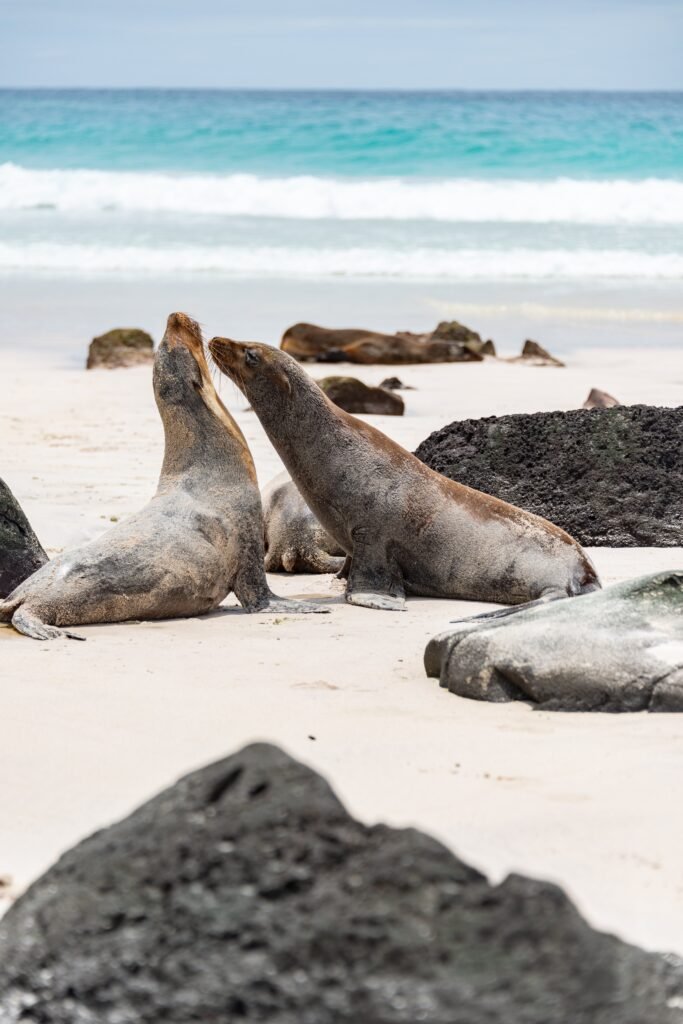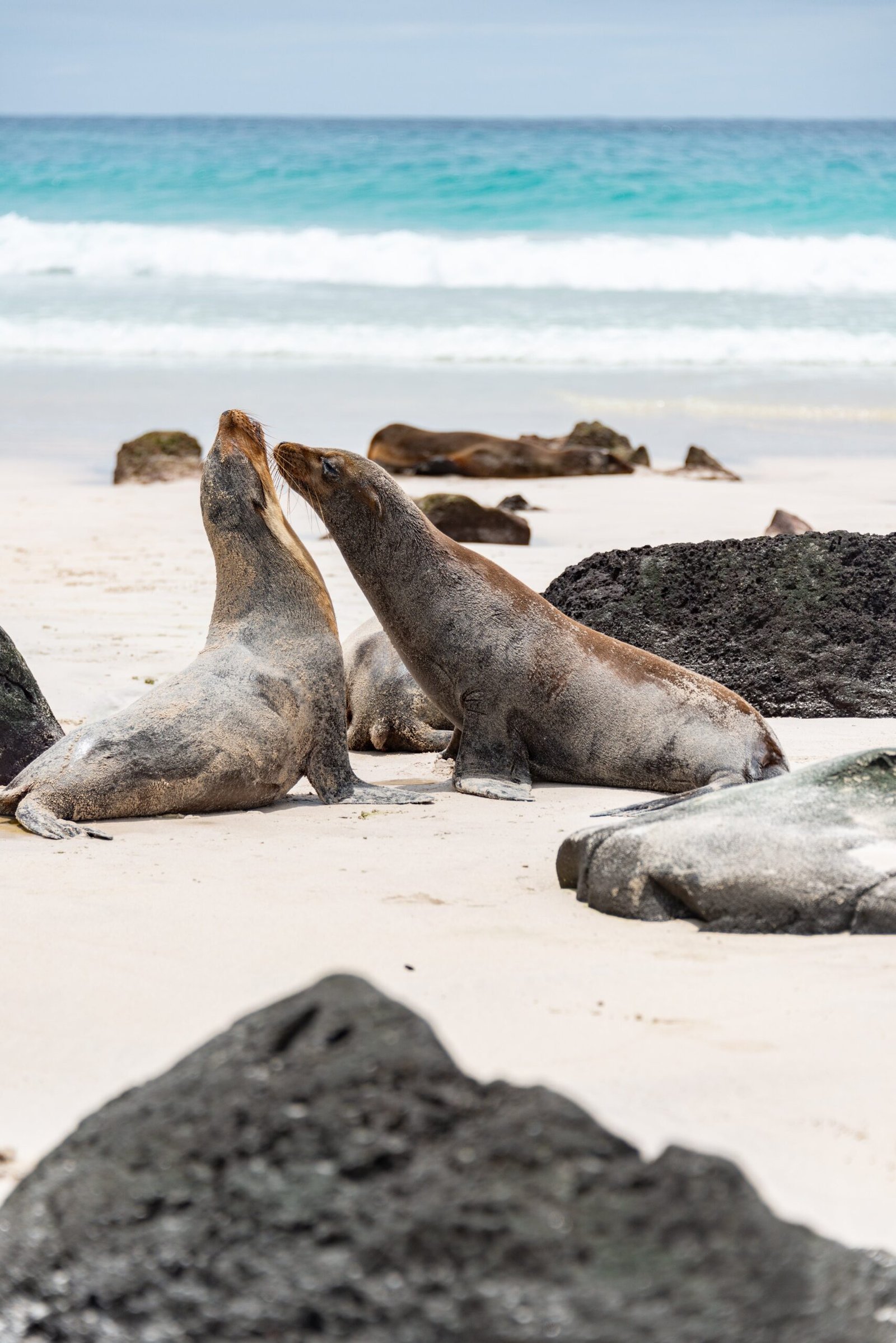Have you ever wondered about the fascinating world of frogs and toads? In this article titled “Ranas Y Sapos,” we will take a closer look at these amphibious creatures. With their unique characteristics and diverse habitats, frogs and toads hold a special place in the animal kingdom. From their distinctive croaks to their remarkable ability to adapt to different environments, these fascinating creatures have captivated humans for centuries. So, join us as we explore the enchanting world of frogs and toads!

Types of Ranas y Sapos
Common Frog
The Common Frog, also known as the European Common Frog, is one of the most familiar and widespread species of frogs. These frogs are found throughout Europe and parts of Asia, and they inhabit a variety of terrestrial and aquatic habitats. They have smooth skin and are typically green or brown in color, which helps them blend in with their surroundings. The Common Frog is known for its distinctive croaking sound, which is often heard during the breeding season.
Poison Dart Frog
The Poison Dart Frog, also known as Poison Arrow Frog, is a small and brightly colored frog that is native to Central and South American rainforests. These frogs are known for their toxic skin secretions, which can be deadly to predators. The bright colors of Poison Dart Frogs serve as a warning sign to potential predators. There are multiple species of Poison Dart Frogs, each with its own unique color pattern.
Tree Frog
Tree Frogs are a diverse group of frogs that are known for their ability to climb and cling to trees. They have long and slender bodies, with long limbs and adhesive toe pads that allow them to climb vertical surfaces. Tree Frogs are found in various parts of the world, including tropical rainforests and temperate regions. They are known for their distinctive vocalizations, which can range from high-pitched chirping to trilling sounds.
Goliath Frog
The Goliath Frog, also known as the Giant Frog or Conraua goliath, is the largest frog in the world. These enormous frogs can grow up to 12.6 inches in length and can weigh up to 7 pounds. They are indigenous to the rainforests of Central and West Africa. Goliath Frogs have a unique body shape, with a bulky build and short limbs. They are typically green or brown in color, which provides them with excellent camouflage in their natural habitat.
Habitat and Distribution
Aquatic Environments
Many species of Ranas y Sapos are adapted to aquatic environments. They can be found in ponds, lakes, rivers, and wetlands. Aquatic habitats provide these amphibians with a suitable environment for breeding and laying their eggs. They rely on the water to provide them with food and protection from predators. Aquatic Ranas y Sapos have specialized adaptations, such as webbed feet, that enable them to swim efficiently and catch prey underwater.
Terrestrial Habitats
Ranas y Sapos are also well-adapted to living in terrestrial habitats. They can be found in forests, grasslands, deserts, and even urban areas. Terrestrial habitats offer these amphibians shelter and a diverse range of food sources. While some Ranas y Sapos spend most of their lives on land, they may still require access to water for breeding and reproduction.
Tropical Rainforests
Tropical rainforests are home to a wide variety of Ranas y Sapos. These amphibians thrive in the moist and humid conditions of the rainforest. The dense vegetation provides them with ample hiding spots and a variety of food sources, such as insects and small invertebrates. The diverse array of species in tropical rainforests allows for complex ecological interactions between Ranas y Sapos and other organisms.
Temperate and Arctic Regions
While Ranas y Sapos are commonly associated with tropical climates, there are also species that can be found in temperate and even Arctic regions. These amphibians have adapted to the colder temperatures and harsher conditions of these environments. They may hibernate during the winter months or migrate to warmer areas. Ranas y Sapos in temperate and Arctic regions play important roles in their ecosystems, contributing to nutrient cycling and serving as indicators of environmental health.
Physical Characteristics
Body Shape and Size
Ranas y Sapos come in a range of body shapes and sizes, depending on their species and habitat. Common Frogs have a slim and streamlined body, allowing them to move quickly through water and on land. Poison Dart Frogs are small and compact, with a rounder body shape. Tree Frogs have elongated bodies with long limbs, which help them climb and grasp onto branches. Goliath Frogs, as their name suggests, have a more bulky and robust body structure.
Skin and Coloration
The skin of Ranas y Sapos is an important anatomical feature. It serves as a protective barrier against water loss and aids in respiration. The coloration of their skin can vary greatly between species and can be influenced by their habitat and lifestyle. Common Frogs and Tree Frogs often have green or brown coloration, which helps them blend in with their surroundings. Poison Dart Frogs, on the other hand, display bright colors such as red, blue, orange, and yellow, signaling their toxicity to potential predators.
Skeletal Structure
The skeleton of Ranas y Sapos is specially adapted to their unique lifestyle. They have a flexible backbone that allows them to move and jump efficiently. Their hind legs are longer and more muscular than their front legs, which enables them to propel themselves forward in powerful jumps. The skeleton also provides support for their lungs and other internal organs.
Sensory Organs
Ranas y Sapos have well-developed sensory organs that help them navigate their environment and locate prey. Their eyes are positioned on the sides of their head, giving them a wide field of vision. They have excellent depth perception and the ability to detect motion. Their tympanum, a membrane-like structure behind the eye, allows them to hear sounds and communicate with other frogs. Some species of Ranas y Sapos also have specialized skin cells that can sense vibrations and changes in their environment.
Life Cycle
Egg Stage
The life cycle of Ranas y Sapos begins with the laying of eggs in water or damp environments. Female frogs release eggs in gelatinous clumps, while toads often lay long strings of eggs. These eggs are typically translucent and can be seen floating in water or attached to plants. The number of eggs laid varies between species, with some frogs producing hundreds or even thousands of eggs at a time.
Tadpole Stage
After the eggs hatch, they enter the tadpole stage, which is characterized by the presence of gills and a finned tail. Tadpoles are fully aquatic and feed on algae and small plants. During this stage, they undergo rapid growth and development as they transition into their adult form. Tadpoles are vulnerable to predation and rely on hiding and camouflage to avoid being eaten by larger aquatic organisms.
Metamorphosis
Metamorphosis is a crucial stage in the life cycle of Ranas y Sapos. During this process, the tadpole undergoes physical changes to transform into an adult frog or toad. The gills disappear, and lungs develop, allowing the amphibian to breathe air. The tail gradually shrinks and is absorbed into the body. Limbs start to grow, and the body shape changes to accommodate the new terrestrial lifestyle. Metamorphosis can take anywhere from a few weeks to several months, depending on the species and environmental conditions.
Adult Stage
Once the metamorphosis is complete, the Rana or Sapo enters the adult stage. At this point, they have fully adapted to their habitat and are capable of reproducing. Adult frogs have lungs for respiration and rely on their legs for locomotion. They continue to grow and mature, reaching their maximum size and reproductive potential. Adult Ranas y Sapos engage in courtship behaviors and produce vocalizations to attract mates.

Feeding Habits
Carnivorous Diet
Ranas y Sapos are carnivorous, meaning they primarily feed on other animals. Their diet consists of a variety of invertebrates, including insects, spiders, worms, and snails. Larger species such as Goliath Frogs may also consume small vertebrates, such as small fish and birds. Ranas y Sapos capture their prey using their long, sticky tongues or by lunging at their prey with their mouths. They have specialized teeth and jaws that allow them to grasp and consume their food.
Feeding Mechanisms
Different species of Ranas y Sapos employ various feeding mechanisms to capture and consume their prey. Some species, like the Common Frog, use their projectile tongues to catch insects with lightning speed. Others, such as Poison Dart Frogs, have specialized skin secretions that are toxic to their prey. When the prey comes into contact with the frog’s skin, it becomes immobilized or even killed. This feeding mechanism is highly effective and has led to the evolution of bright warning coloration in these frogs.
Predator-Prey Interactions
Ranas y Sapos are an important part of the food chain and play a role in predator-prey interactions. They serve as a food source for a wide range of predators, including birds, snakes, mammals, and even other amphibians. Their toxic skin secretions can deter some predators, but not all. Some predators, such as certain snake species, have developed immunity to the toxins and can prey on Poison Dart Frogs without adverse effects.
Invasive Species Concerns
In certain cases, invasive Ranas y Sapos species can have a negative impact on native ecosystems. When introduced to new environments, these invasive species can outcompete and prey upon native species, leading to declines in biodiversity. Additionally, some invasive frogs and toads produce toxic secretions that can harm local wildlife. It is vital to monitor and control the spread of invasive Ranas y Sapos to protect native ecosystems.
Communication and Vocalizations
Vocal Calls
Communication among Ranas y Sapos often involves vocalizations, which play a crucial role in attracting mates and defending territories. Male frogs are known for their distinctive calls, which differ between species and can vary in pitch, duration, and rhythm. The calls are typically produced by inflating their vocal sacs, which amplifies the sound. Vocal calls can be heard during the breeding season and serve to attract females and establish dominance.
Visual Signals
In addition to vocal calls, Ranas y Sapos also use visual signals to communicate. These signals can include physical displays, such as exaggerated body postures or the extension of vocal sacs. Bright coloration, such as the vibrant hues of Poison Dart Frogs, can also serve as a visual signal to potential mates or predators. Visual signals are an essential means of communication in both courtship and territorial disputes.
Chemical Communication
Chemical communication is another important form of communication among Ranas y Sapos. They produce and detect chemicals called pheromones, which can convey information about sex, reproductive readiness, and even territorial boundaries. Male frogs often release pheromones to attract females and signal their availability for mating. Pheromones can also play a role in aggression and territoriality, by marking boundaries and deterring potential intruders.
Mating Displays
During the breeding season, male Ranas y Sapos engage in elaborate mating displays to attract females. These displays can include vocalizations, visual signals, and physical movements. Male frogs will often create calling sites and establish territories to increase their chances of attracting a mate. The most successful males with the most elaborate displays and vocalizations usually have the highest chances of mating.

Adaptations
Camouflage
Many species of Ranas y Sapos have evolved camouflage as an adaptation to evade predators and blend in with their surroundings. Their coloration and patterns help them hide among vegetation or in their preferred habitat. Common Frogs and Tree Frogs, with their green and brown coloration, are excellent examples of frogs camouflaging in their environments. This adaptation allows them to remain hidden from predators and ambushing prey.
Toxic Secretions
Some species of Ranas y Sapos, such as Poison Dart Frogs, have developed toxic secretions as a defense mechanism. These toxins serve to deter predators from attacking or eating them. The bright colors of Poison Dart Frogs act as a warning to predators, signaling the potential danger associated with consuming these toxic frogs. The toxins are often derived from their diet, which consists of certain insects and invertebrates that contain toxic compounds.
Mimicry
Mimicry is another survival adaptation seen in certain species of frogs. Some frogs have evolved to resemble toxic or dangerous species in order to deter potential predators. This type of mimicry, known as Batesian mimicry, allows the frog to avoid being eaten by predators that have learned to associate certain color patterns or behaviors with toxicity or harm. By imitating the appearance of a toxic species, the frog gains protection from predation.
Hibernation
In order to survive cold temperatures or drought conditions, many Ranas y Sapos enter a state of hibernation. During hibernation, their metabolic rate decreases, and their activity slows down significantly. This adaptation allows them to conserve energy and survive during periods when food and water are scarce. Hibernation can take place in underground burrows, beneath leaves or rocks, or in underwater habitats that do not freeze during winter.
Importance and Role in Ecosystems
Indicators of Environmental Health
Ranas y Sapos are often considered ecological indicators, meaning their presence and numbers can provide valuable information about the health of an ecosystem. They are sensitive to changes in temperature, water quality, and habitat availability. If the population of Ranas y Sapos declines, it may be an indication of pollution, habitat destruction, or climate change. Monitoring and protecting Ranas y Sapos can help scientists assess the overall health of an ecosystem.
Predator Control
Ranas y Sapos play a critical role in controlling populations of prey species, such as insects and invertebrates. They act as natural predators, keeping these populations in balance and preventing outbreaks that could harm agricultural crops or impact other organisms. By maintaining a healthy population of Ranas y Sapos, we can help regulate and maintain the delicate balance of ecosystems.
Seed Dispersal
Certain species of Ranas y Sapos contribute to seed dispersal within their ecosystems. They may inadvertently swallow plant seeds while feeding and then transport them to new areas through their digestive system. These seeds can then be deposited in different locations, leading to the establishment of new plant populations. This seed dispersal mechanism helps maintain biodiversity within ecosystems and ensures the survival of different plant species.
Nutrient Cycling
Ranas y Sapos are important contributors to nutrient cycling within ecosystems. As they consume insects and other prey, they release nutrients back into the environment through their waste. These nutrients, such as nitrogen and phosphorus, are essential for the growth and development of plants. By cycling these nutrients, Ranas y Sapos play a vital role in maintaining nutrient balance within their habitats.

Conservation
Habitat Destruction
Habitat destruction is one of the primary threats to Ranas y Sapos populations worldwide. As human activities continue to expand into natural habitats, such as forests and wetlands, the habitats of these amphibians are being destroyed or fragmented. Deforestation, urbanization, and pollution are all contributing factors to the loss of suitable habitat for Ranas y Sapos. Protecting and restoring their habitats is crucial for their survival.
Collection for Pet Trade
Ranas y Sapos are often collected from the wild for the pet trade, leading to declines in wild populations. While the trade in some frog species is regulated, illegal poaching and smuggling still occur. These practices can have a significant impact on wild populations, as the removal of individuals from their environment disrupts breeding and can lead to imbalances within ecosystems. It is essential to promote responsible pet ownership and discourage the illegal trade of Ranas y Sapos.
Amphibian Chytrid Fungus
Amphibian Chytrid Fungus is a disease caused by the infection of a fungus called Batrachochytrium dendrobatidis. It has caused significant declines in Ranas y Sapos populations worldwide. The fungus affects the skin of amphibians, disrupting their ability to absorb water and nutrients. Conservation efforts are focused on preventing the spread of Chytrid Fungus, monitoring infected populations, and captive breeding programs to safeguard vulnerable species.
Conservation Efforts
Numerous organizations and researchers are actively working towards the conservation of Ranas y Sapos. These efforts include habitat restoration projects, captive breeding programs, public education initiatives, and research into disease management and prevention. Conservation awareness is crucial in fostering a sense of responsibility towards these unique and important creatures, ensuring their survival for future generations.
Cultural Significance and Folklore
Mythology and Symbolism
Ranas y Sapos hold significant cultural symbolism in various cultures around the world. In many ancient mythologies, frogs and toads are associated with creation, fertility, and transformation. They are often seen as symbols of rebirth and renewal. Frogs and toads have also been depicted in art, folktales, and religious symbolism, representing different aspects of human existence and the natural world.
Traditional Medicine
In different cultures, Ranas y Sapos have been used in traditional medicine for their alleged healing properties. The secretion from certain species has been believed to have medicinal or mystical qualities. However, it is important to note that the use of frogs and toads in traditional medicine can have a negative impact on wild populations. Sustainable alternatives and responsible practices should be promoted to protect these amphibians.
Folktales and Legends
Frogs and toads are often featured in folktales and legends, where they are portrayed as wise or magical creatures. In many tales, frogs and toads are associated with transformation and shape-shifting. They are often depicted as helpful or wise figures, offering guidance or granting wishes to those who encounter them. These stories reflect the cultural significance of Ranas y Sapos and their enduring place in human imagination.
Art and Literature
Ranas y Sapos have inspired artists and writers throughout history. Their unique appearance and behaviors have been depicted in various forms of art, including paintings, sculptures, and illustrations. They have also been featured in literature, where they often symbolize fertility, transformation, or the natural world. Ranas y Sapos continue to capture the human imagination and hold an important place in artistic expression.

